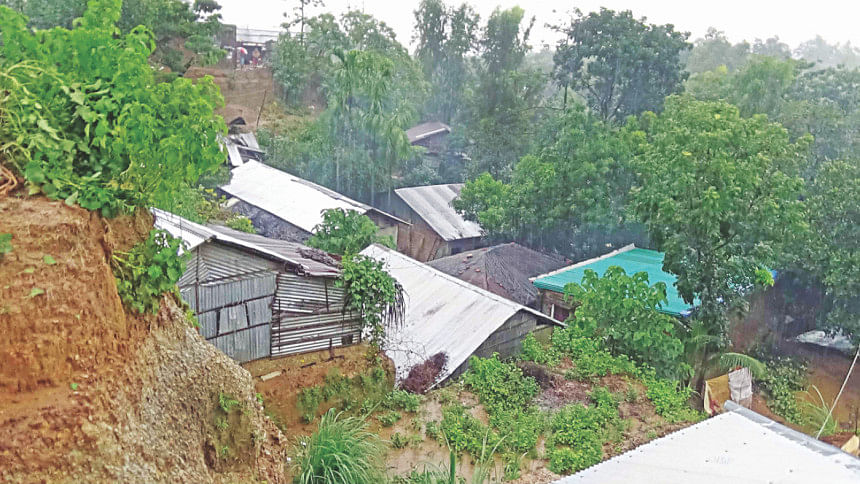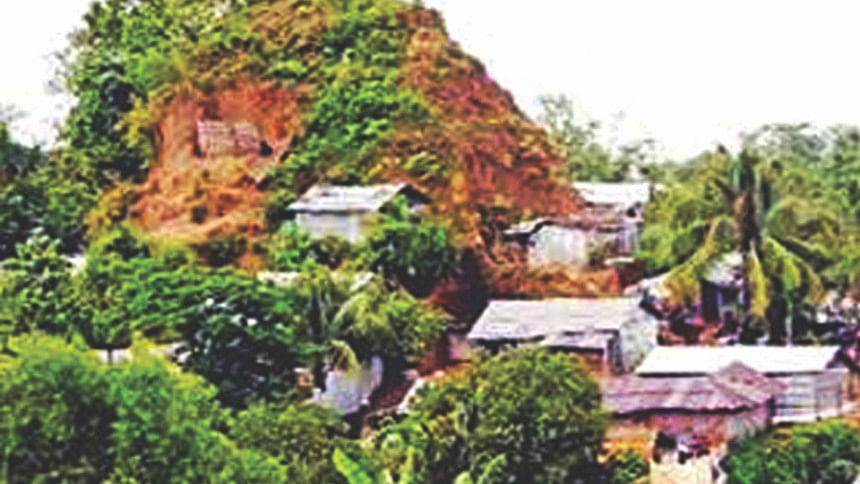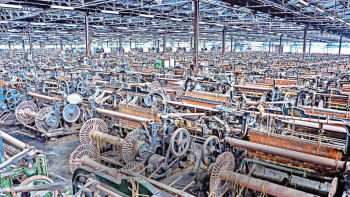Danger doesn't deter people

Ignoring the risk of landslides, an estimated 50,000 people live dangerously on the slopes of hills in Cox's Bazar.
Landslides over the last five years claimed at least 148 lives and there has been no official study to determine how many people are at risk or the circumstances that drive them to live on the slopes.
Death toll from rain-induced landslides stood at 10 with the arrival of monsoon season this year. The latest incident took place on July 27, claiming five lives. Just a month ago five more had died this way.
This region is subjected to inclement weather all too frequently. Cyclone Komen is the recent-most example.
The Daily Star estimates that 5 lakh people live in the hills of Cox's Bazar illegally and 50,000 of them are in danger of becoming victims of landslides.

The guess is based on scattered estimates by government and non-government organisations.
The approximation only considered Cox's Bazar, the heart of country's tourism. Unlike other hilly districts, it attracts the largest number of people, landless and rich.
Unabated land grabbing and hill cutting, often by real estate companies and influential politicians since land value in Cox's Bazar is as high as in Dhaka, are reasons for landslides in the hills, experts said.
The Forest Department of Cox's Bazar (South) survey made in 2010 says under its jurisdiction there were 18,000 houses illegally built on the hills and about 1 lakh people were living in them.
Non-stop deforestation, hill cutting, and land grabbing left about 145 acres at 14 places in and around the district town almost without any greenery.
The 14 places included areas like the Light House, Kolatoli, Borochhara, Adarshagram, Chauddagram, Larpara, Pahartoli and Ghinarpara.
The occupation of these hills was apparently touched off by a government decision that changed the status of the land to khas land from forest land in 1999. This resulted in a legal wrangle that continues between government departments, the forest office and the district administration.
According to Sarder Shariful Islam, an assistant director at the department of environment, an estimated 20,000 houses dot the 14 areas. He said the houses were home to 1.5 lakh to 2 lakh people.
Sharif said the number of people living illegally on the hills would be between 5-7 lakh.
President of Bangladesh Poribesh Andolon (Bapa) district unit Fazlul Quader Chowdhury and Convener of NGO Alliance Abu Morshed Chowdhury Khoka claimed that the number would be close to 10 and 7 lakh respectively.

The land ownership debacle, coupled with corruption by some government employees, has made it easier for the grabbers to occupy hilly land, they said.
Seven of all the eight upazilas in Cox's Bazar have hills and forests. The hills of Teknaf, Ramu, Ukhiya, Pekua, Chokoriya and Moheshkhali are being occupied bit by bit every day, with houses replacing the greeneries that keep the soil together.
According to an estimate prepared by chairmen of nine unions of Ramu, 9,000 families had their houses illegally built on the slopes of hills, home to more than 50,000 people.
Divisional Forest Officer (North) Shah-e-Alam of the Forest Department in Cox's Bazar said he could confirm existence of 12,541 families living illegally on the hills in his area.
According to the district administration and divisional forest offices in Cox's Bazar and Chittagong, 23,054 hectares of 89,162 hectares of forest land have already been occupied.
Over 2,000 hectares of 7,314 hectares of forest land in Moheshkhali have already been occupied, according to Chittagong Coastal Forest Department.
Cox's Bazar (South) Senior Assistant Forest Conservator Rejaul Karim Chowdhury admitted that many of the hills wore a bald look due to deforestation and grabbing.
He lamented that the country's one of the richest districts in terms of forest resources has lost most of its assets.
The cleansing of forests also affects natural water flow, causing flash floods and waterlogging in the hills. Rain water carrying earth from the surface of hills and mountains fill water bodies and sewerage systems. Dirt sometimes even piles up on highways disrupting traffic.
At least 30 percent of the illegal occupants in Ukhiya, Teknaf, Ramu and Cox's Bazar are said to be Rohingyas.
Cox's Bazar Deputy Commissioner Ali Hossain claimed to have instructed the UNO to prepare a list of people illegally occupying land and hills.
Teknaf's UNO Shahidul Islam said he has asked the upazila parishad chairman to report on illegal occupants on hills.

 For all latest news, follow The Daily Star's Google News channel.
For all latest news, follow The Daily Star's Google News channel. 



Comments